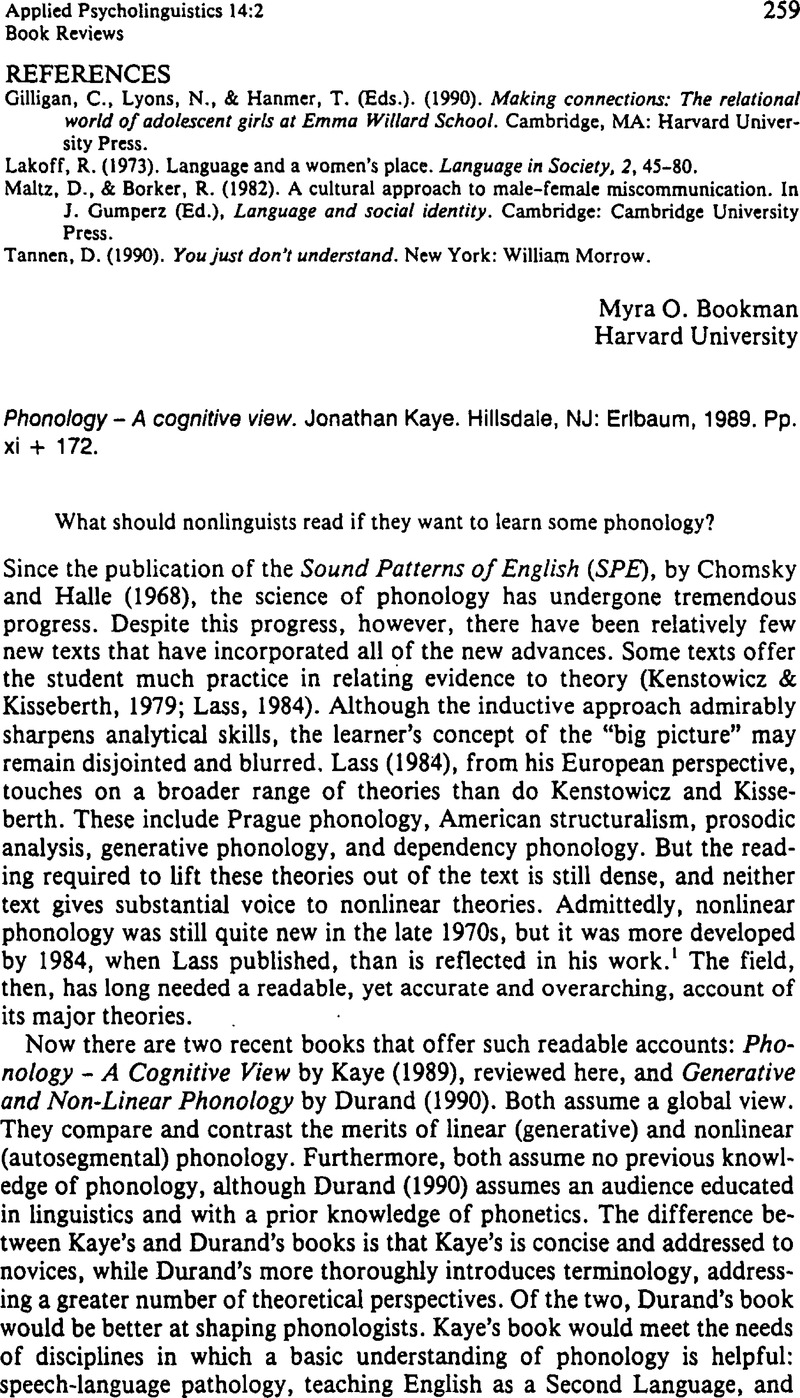No CrossRef data available.
Article contents
Phonology - A cognitive view. Jonathan Kaye. Hillsdale, NJ: Erlbaum, 1989. Pp. xi + 172.
Published online by Cambridge University Press: 28 November 2008
Abstract
An abstract is not available for this content so a preview has been provided. Please use the Get access link above for information on how to access this content.

- Type
- Book Reviews
- Information
- Copyright
- Copyright © Cambridge University Press 1993
References
REFERENCES
Chomsky, N., & Halle, M. (1968). The sound patterns of English. New York: Harper and Row.Google Scholar
Ginsberg, H. & Opper, S. (1969). Piaget's theory of intellectual development: An introduction. Englewood Cliffs, NJ: Prentice-Hall.Google Scholar
Halvorsen, P. -Kr. (1988). Computer applications of linguistic theory. In Newmeyer, F. J. (Ed.), Linguistics: The Cambridge survey: Vol. 2. Linguistic theory: Extensions and implications (pp. 198–219). New York: Cambridge University Press.Google Scholar
Kenstowicz, M., & Kisseberth, C. (1979). Generative phonology: Description and theory. Boston: Academic.Google Scholar
Lass, R. (1984). Phonology: An introduction to basic concepts. Cambridge: Cambridge University Press.Google Scholar
Piaget, J. (1955). The language and thought of the child. New York: World Publishing/Times Mirror.Google Scholar




